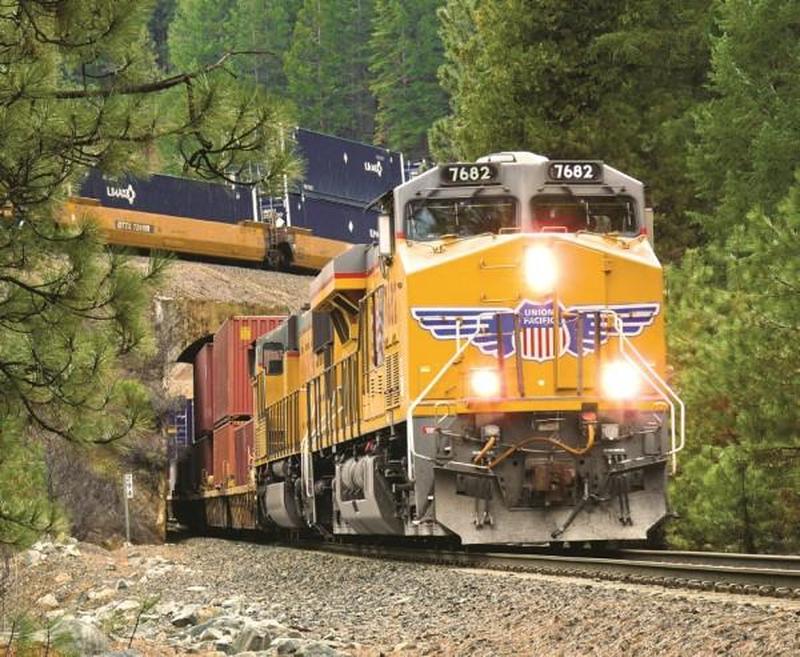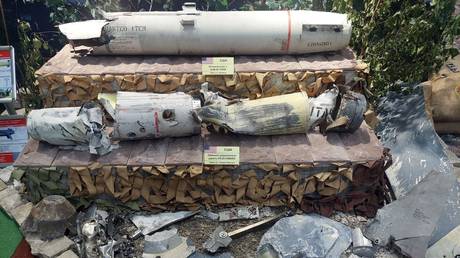“I’ve Never Seen Anything Like This”: Shippers Using West Coast Ports Can’t Book Rail On BNSF And Union Pacific
from ZeroHedge:

By Stas Margaronis of AJot Insights
A Northern California logistics consultant was unable to book containers on the Burlington Northern Santa Fe (BNSF) or Union Pacific (UP) railroads for the first week of September going to and from U.S. West Coast ports and Midwest destinations.
The consultant said, “I have been working in the industry for thirty years and I have never seen anything like this. It’s weird.”
The result is that importers of low value products being shipped by containers such as tee shirts would be at an economic disadvantage transporting containers by truck as opposed to by rail between U.S. West Coast ports and Midwest destinations, because of the higher cost
The consultant explained that there is a huge shortage of rail capacity: “There are no rail cars and there are no chassis.”
The consultant, who is not identified, was contracted to research container rail bookings on the UP and BNSF to and from U.S. West Coast ports including:
- Los Angeles
- Long Beach
- Oakland
- Seattle
The result of the research was that: “The railroads will not take any bookings right now and so all the containers going to and from the West Coast to places such as Chicago and Memphis must go by truck.”
The consultant cited the following trucking rates per container as examples:
- Los Angeles/ Long Beach to Chicago: $7000.
- LA/LB to New Berlin, Wisconsin: $6,700.
- LA/LB to Nashville, Tennessee: $7,200.
- LA/LB to Dallas, Texas: $5000.
- LA/LB to Jacksonville, Florida: $8,800.
The consultant said that in the past it had been possible to truck a container coast-to-coast for $2,000: “But those days are gone.”
In addition, “In the good old days you could ship a container from the West Coast to Chicago or Memphis by rail for $1000 dollars.”
The research found one exception. It was possible to ship a container on a COSCO vessel to Shanghai from Memphis, Tennessee via the Port of Prince Rupert, British Columbia utilizing the Canadian National Railway.
The problem: “The travel time was over twenty-one days which is way too slow.”
However, rail intermodal moves are a complex affair, particularly when there is a significant freight imbalance as there is at the moment on the West Coast. A BNSF spokesman told AJOT, “The claim that we have a lack of railcar capacity for international shipments is inaccurate. BNSF is open for business and ready to receive all freight from ocean carriers at the West Coast ports. We have a railcar fleet in excess of demand and have sufficient locomotives, equipment and people across our network to handle current and additional volumes. As always, we are in constant communication with our customers and remain focused on meeting their shipment needs.”
And a UP spokeswoman referred AJOT to an August 26th statement by Kenny Rocker, executive vice president, Marketi:
“We continue to align our resources to handle the increase in demand and are excited to build on the positive momentum we’re seeing this month. And to specifically address the surge of intermodal demand, we are modifying our ingate windows at several intermodal terminals across our network to help manage gate and ramp fluidity. We continue to evaluate our terminal activity and will make any necessary adjustments to accommodate your needs and, at the same time, deliver the safe and reliable service you expect.”
On August 24th, the heads of the Surface Transportation Board (STB) and the Federal Railway Administration (FRA) sent identical letters to the heads of the leading U.S. railroads, including the Union Pacific (UP) and the Burlington Northern Santa Fe (BNSF) expressing concerns about the adequacy of U.S. railroad service and the adequacy of personnel to transport freight.



